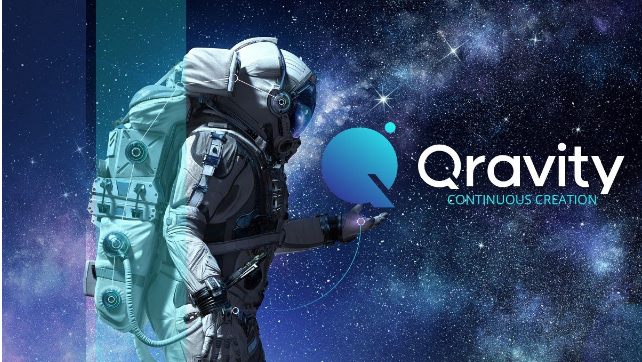
ABOUT QRAVITY PLATFORM
Qravity Platform is a decentralised digital content development and distribution platform with integrated project management tools, including asset production and approval, file sharing, and messaging for community and team communication. Project team members use these features according to their role. For example, founders can use the platform to direct their creative teams, while creators can track their progress and stakes. Upon project completion, Qravity brings the content to market, making it consumable through its platform, selling rights to distributors, and selling directly through third-party digital marketplaces like app stores and streaming services.
The implementation of blockchain technology (smart contracts) [1] ensures that every contribution that a content creator makes to a project is immutable. Qravity rewards creators with shares of project ownership for each contribution; whenever a creator completes a specific task, they receive the number of Qravity Project Tokens (QPT) that the project founder has assigned to that task. These QPT are tracked and created within Ethereum smart contracts, making them unique to specific projects and virtually immune to forgery or fraud. Regardless of the size or complexity of the tasks, the more tasks a creator completes, the more QPT they earn, and the greater their share of project ownership.
Creators receive payment in Qravity QCO, the platform’s currency, which is tradable on exchanges. The amount of QCO the receive corresponds the amount of QPT they earned for their work.
Qravity Blockchain Technology
Blockchain functionality of smart contracts to give tech-focused readers insight into how Qravity plans to use them in greater detail. We are aware of some of the challenges that blockchain presents, so we’re analyzing off-chain and Ethereum-developed scaling solutions. As blockchain usage grows, we will need to ensure that Qravity can overcome blockchain’s scaling issues. We are under the impression that the Ethereum Foundation is working on solutions to the challenges of scaling and mining efficiency. We will not be dependent on Ethereum’s founders for these solutions, and will look for potential alternatives as we build the platform.
Qravity QCO and QPT
Qravity Platform uses tokens called Qravity QCO (QCO) for all monetary transactions. Anyone can buy these tokens with ETH during the Qravity ICO. After the token sale, QCO will be available on third-party exchanges. Qravity Project Tokens (QPT) are project-specific tokens that track project ownership; in other words, they represent shares in a project. QPT are for internal use only and cannot be purchased.
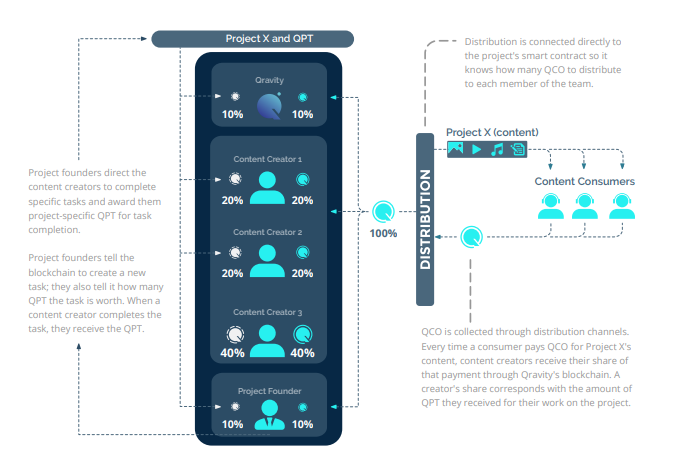
These tokens are created and given to content creators in exchange for the work they complete for a project. A content creator can complete tasks for, and therefore receive QPT from, multiple projects. Every time a consumer or distributor buys content on the Qravity platform, creators receive a portion of the payment in QCO based on the amount of QPT they earned for their contribution to the content’s production. The more tasks they completed for a specific project, the more QPT they earn for their work on that project.
Qravity Project Framework Flow
This system creates a framework for project founders, enabling them to define a set of clear expectations for content creators and the project itself, using the tasks, and task criteria and completion, as milestones. Founders can add more tasks to their projects at any time. When a team member completes a task, they receive QPT in the amount specified by the project founder in the task’s definition. The more QPT collected by a team member during the creation of a project, the greater their share in the ownership of that project.
Qravity receives 10% of the total QPT of a project as soon as it is ready for distribution. The founder receives a percentage of their completed project’s total QPT. They set this stake with the Project Share Distribution slider in the project management dashboard; this slider must be set during the project creation phase, and remains locked upon project publication. The founder can set their stake as less than the 10% default, thereby increasing stakes, and incentive, for content creators
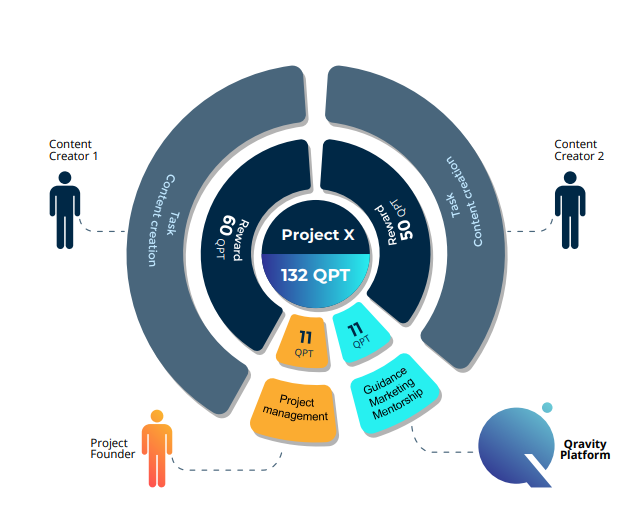
Qravity Business Model
The platform generates revenue through its shares in ownership of each project on a percentage basis, and by licensing content to consumers. For every project, Qravity’s stake is fixed at 10%.
To earn this percentage, the platform offers
• Marketing of Qravity content • Customer support • Mentorship • Bandwidth and storage • Transparent payment • Content distribution
The 10% stake for new projects may increase or decrease dynamically for future project founders according to the health of the platform’s economy. The rate set during project creation is permanent. The following diagram shows the flow of QCO, or revenue, in the platform. For Wholesaler Content Distributors (WCD), Qravity can manually create paper contracts, convert fiat payments into QCO through exchanges on behalf of the WCDs, and inject that QCO into the platform until WCDs start using B2B blockchain transactions regularly.
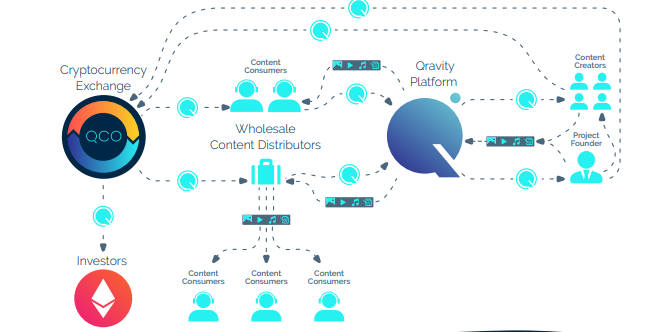

Crowdsale and Tokens
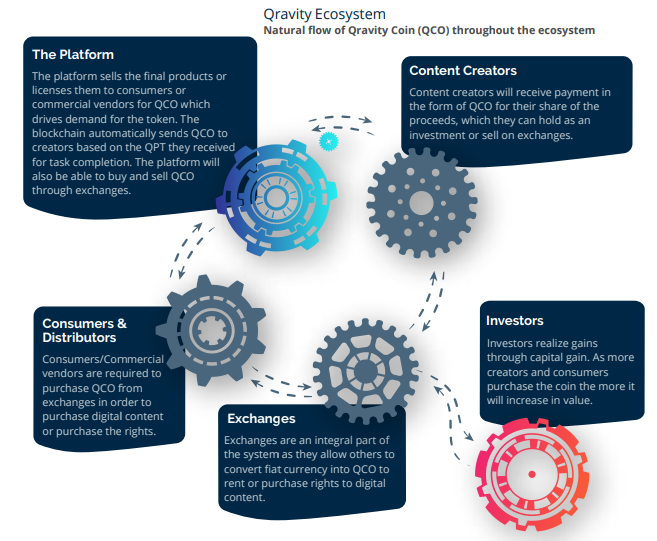
QCO Distribution
The tokens are ERC 827, and will be distributed according to the pie chart below. The largest portion of token distribution will be attributed to token sales. Token stability is an important part of the Qravity ecosystem and it is our goal to help minimize volatility. We will facilitate large transactions of QCO via the exchanges by selling large amounts of QCO when buyers want to purchase access to digital content. The remainder will be distributed to team members, advisors, directors, and consultants. Bounties will also be offered to those that assist with marketing activities that result in ICO participation.

TOKEN ALLOCATION
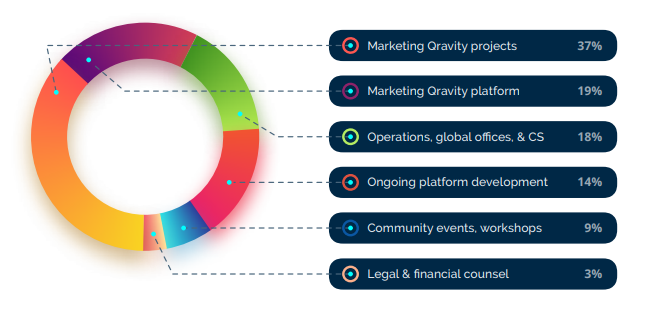
ICO DETAILS
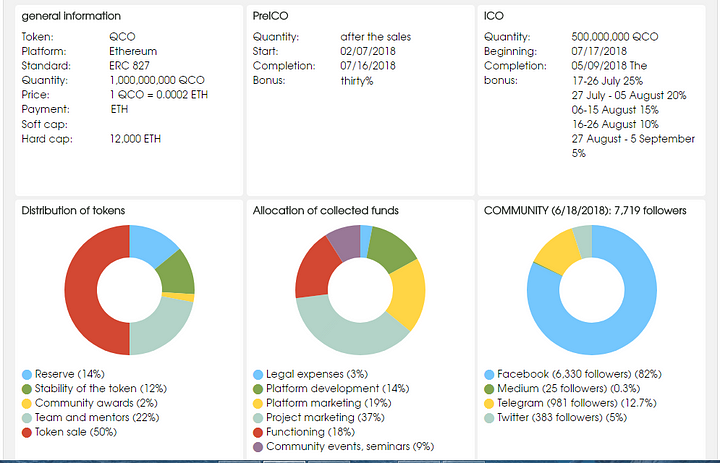
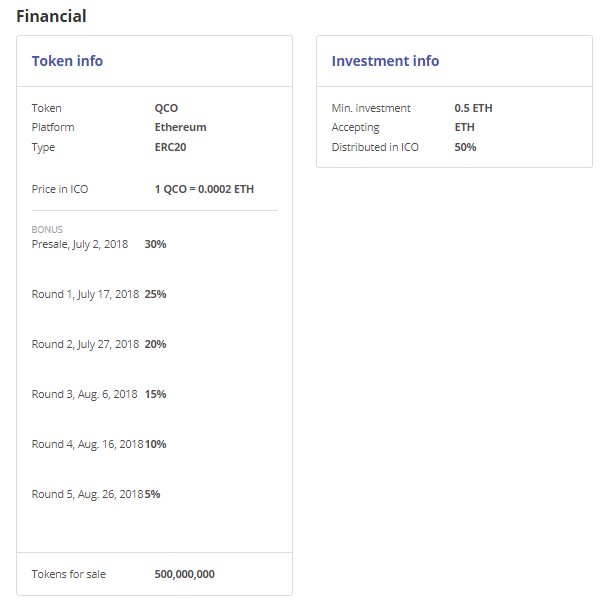
PROJECT TEAM
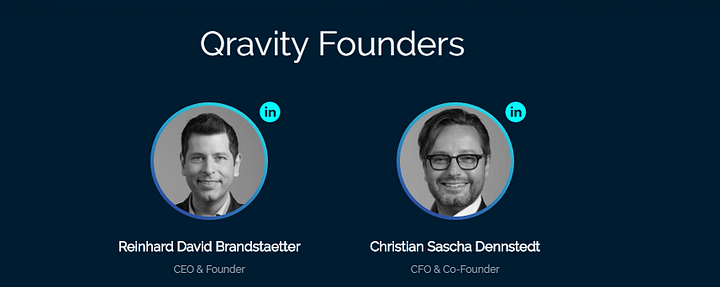


PROJECT ROADMAP

FOR FUTHER INFORMATIONCLICK LINKS BELOW
Website: https://qravity.com/en/
Facebook: https://www.facebook.com/QravityCom/
Twitter: http://twitter.com/QravityCom
Telegram: http://t.me/QravityCom
Whitepaper:https://media.qravity.com/media/filer_public/a5/bb/a5bb8ad0-c7f0-4fe2-a84d-52e50e162a3d/qravity_whitepaper_v1-0_public_en.pdf
Website: https://qravity.com/en/
Facebook: https://www.facebook.com/QravityCom/
Twitter: http://twitter.com/QravityCom
Telegram: http://t.me/QravityCom
Whitepaper:https://media.qravity.com/media/filer_public/a5/bb/a5bb8ad0-c7f0-4fe2-a84d-52e50e162a3d/qravity_whitepaper_v1-0_public_en.pdf
Author:dhavid19
Bitcointalk Profile Link:https://bitcointalk.org/index.php?action=profile;u=1795848
0x2e0aE95a7871c8A38A513981904410d07DD96231
No comments:
Post a Comment